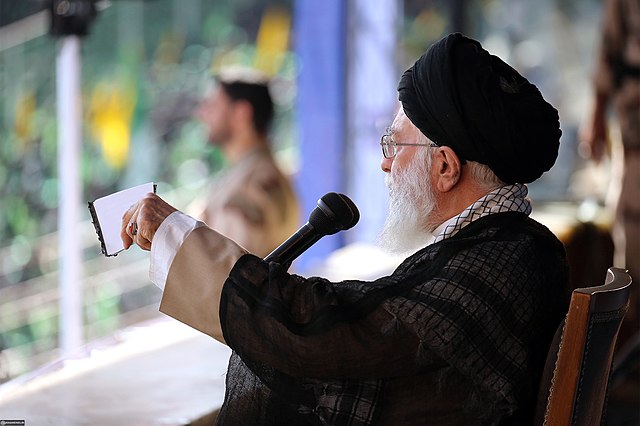by Peter Jenkins
There is a flaw in the Iranian plan to use partial non-implementation of the 2015 nuclear agreement (the Joint Comprehensive Plan of Action or JCPOA)—and maybe eventual withdrawal from the Nuclear Non-Proliferation Treaty (NPT)—to put pressure on Europe and other U.S. allies to persuade President Donald Trump to lift the economic siege of Iran. It assumes that those allies have greater influence over Trump’s decision-making than has been apparent in the past.
The Iranians are right to think that Europe is strongly attached to the JCPOA. European governments see its conclusion as the culmination of 12 years of European diplomacy, a major collective achievement. They value the access it gives to inspectors of the International Atomic Energy Agency (IAEA) and the restrictions that it imposes on Iranian nuclear activity while those inspectors determine whether the world can have confidence in Iran’s repeated expressions of abhorrence for nuclear weapons.
In other words, Europe has good reasons for wanting to preserve the JCPOA. There is European will to deliver what Iran has been increasingly denied: the export revenues, the aircraft, and the investments that both Europe and the United States promised in 2015. However, this is no guarantee that Europe can persuade President Trump to allow Europe and Asia to resume the business that fear of enormous U.S. fines has stifled. European leaders showed ample political will during the first months of 2018, arguably conceding more than was just in their eagerness to win over President Trump. Nonetheless, they failed to get him to abandon his assault on the JCPOA.
Furthermore, the Iranian plan is risky. Europeans know that Iran has been provoked, grievously, into threatening progressive non-implementation of the JCPOA and, possibly, withdrawal from the NPT. They know that they bear, unintentionally, some responsibility for Iran’s sense of grievance, since they have been unable to devise a satisfactory antidote to secondary U.S. sanctions. But they cannot be expected to condone non-implementation. For Europeans, pacta sunt servanda is an essential diplomatic principle. It will lead them to condemn non-implementation and, still more, NPT withdrawal, which they will see as a threat to a regime that they value as highly as the UN Charter. Beyond condemnation lies ostracism, the addition of political isolation to the economic hardships that Iran is already experiencing.
Iran needs an alternative plan to get the economic siege lifted, one that can address two objectives. It must appeal to President Trump by giving him an opportunity to tweet that he has blocked Iran’s path to nuclear weapons without entangling the United States in yet another war. At the same time, it must not be open to the interpretation that Iran has given ground, making additional concessions to obtain what it should have been getting as a party to the JCPOA.
One such idea could be the creation of a nuclear-weapon-free zone (NWFZ) covering Iran, Iraq, Saudi-Arabia, Kuwait, Bahrain, Qatar, the United Arab Emirates, and Oman.
The Central Asian NWFZ is the most recent of four existing NWFZ’s and thus would be a suitable model for a Gulf zone. It is a legally binding treaty, unlike the JCPOA. Inter alia and crucially, it obliges the parties not to conduct research on, develop, manufacture, stockpile or otherwise acquire, possess, or have control over any nuclear weapon or other nuclear explosive device by any means anywhere—and not to allow on their territories any actions, by anyone, to assist or encourage the development, production, stockpiling, acquisition, possession, or control over any nuclear explosive device.
Iranian leaders could tell themselves that entering into such an agreement would not extend Iranian commitments beyond existing limits. Establishing a NWFZ would have useful implications for Saudi and Emirati nuclear ambitions. It could prove a step toward the collective Gulf security arrangements that Iran has been advocating since the 1990s.
If Saudi and Emirati leaders have come to realize that “the head of the serpent” is unlikely to be cut off without the collateral destruction of several of their oil terminals and desalination plants, then perhaps United States and Europe can persuade them to consent to the NWFZ idea serving a common interest in sub-regional de-escalation.
From a global perspective there is everything to be said for a Gulf zone. NWFZ obligations buttress NPT commitments. They contribute to defusing longstanding neighborly feuds and animosities. They create obligations that can be felt more keenly than obligations to a more distant global assembly.
Countering pressure with pressure is commonplace in the world of international diplomacy. Iran’s diplomats are well-known for being a cut above the commonplace. A more imaginative plan for lifting the U.S. siege ought not to be beyond them.






Well said Cyrus! The I. R. of Iran has always campaigned for nuclear-free zone in the Middle East which should include Israel.
However the nuclear issue is only an excuse to inhibit Iran’s progress and demonstrate its strength as a flourishing democracy based on Islamic principles and values.